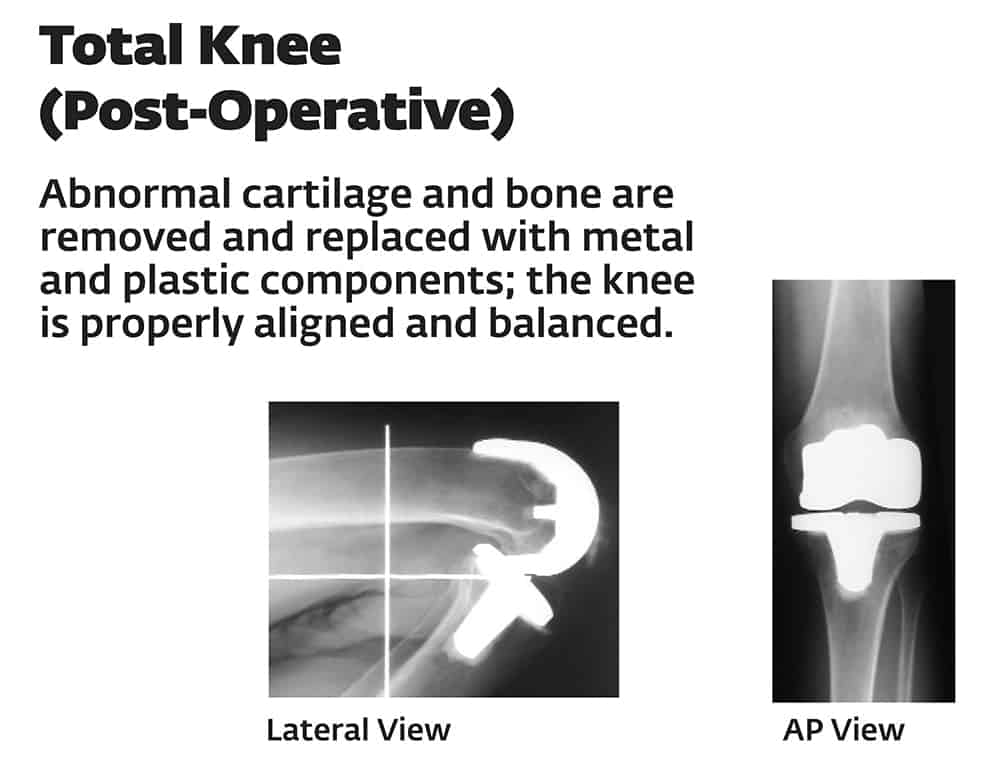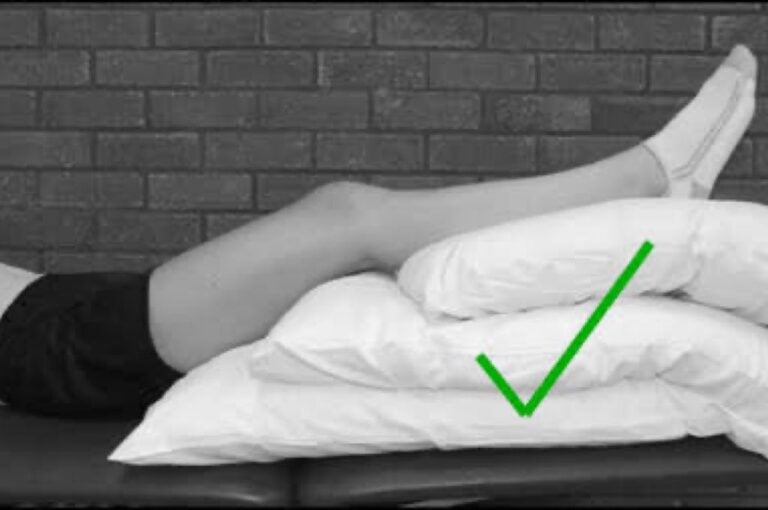Total knee replacement, also called total knee arthroplasty, is a highly successful surgical procedure which involves replacement of all three compartments of the knee (the medial compartment (inside aspect of the knee), the lateral compartment (outside of the knee) and the patellofemoral compartment (in front of the knee)). A partial (or unicondylar) knee replacement, by contrast, replaces only the affected compartment of the knee – for osteoarthritis patients in whom only one compartment of the knee is affected.
When a surgeon considers a patient for a knee replacement, she takes into account the patient’s age, lifestyle, and damage to the joint. In addition, a surgeon’s decision to use one procedure over another, or one type of implant over another, often depends on that surgeon’s training and clinical situation. Each implant design has advantages and disadvantages, but whichever implant your surgeon decides to go with, it’s good to know that total knee replacement surgeries offer among the greatest success rates of all orthopedic operations. Nevertheless, we advise you to research your options so that you can intelligently discuss with your surgeon what approach will be best for you.
What happens in knee replacement surgery?
A total knee replacement replaces the damaged bearing surfaces in your knee that are causing pain. At the lower end of the femur (thigh bone), the bone is trimmed to accept a specially shaped metal component and the upper end of the tibia (shin bone) likewise is trimmed to accept a metal tray. Into this tray will be fitted a plastic bearing.

The implant components can be secured to the cut bone surfaces by the surgeon’s choice of bone cement or a non-cement method called “bone ingrowth”. The majority of knee replacements are generally cemented into place. This is one option you can ask your surgeon about. “What type of fixation will you use to hold my knee in place?”
The outer surface of the femoral component is shaped to allow the kneecap (patella) to slide up and down in its groove. The surgeon may choose to retain the natural kneecap or re-surface it. You can ask your surgeon about this. “Will you be replacing my kneecap or retaining it?
The Cruciate Ligaments are major ligaments inside the knee. They provide support to and stablize the movement of the knee. In total knee replacement surgery, the CL can be kept or removed and this choice depends on their condition, the type of knee implant or the type of surgery the surgeon likes to do. This is another option you can ask your surgeon about. “Will you be removing or retaining my cruciates?”
Sometimes the deterioration of the knee joint is such that total knee replacement can be avoided and your surgeon may suggest resurfacing or partially replacing components of your arthritic knee. Preserving healthy bone stock is especially important to younger and more active individuals. In the last section of this article, we will talk about when a total knee replacement may not be necessary.
What are the different types of implants?
The plastic bearing in your new knee joint will either be fixed or mobile-bearing. This means that the polyethylene insert is either clicked onto a stationary platform (fixed) or able to move on a rotating metal base (mobile). Most people get a fixed-bearing prosthesis that reduces knee pain dramatically and may last for many years. If you are younger, more active and/or overweight, sometimes a doctor may recommend a mobile-bearing or a rotating platform knee replacement designed for potentially longer performance with less wear.
In addition, there is the medial pivot implant which replicates the rotating, twisting, bending, flexion, and stability of your natural knee, so it feels more like your natural knee. This design “stays put” or is more stable during normal knee motion as opposed to sliding forward slightly in flexion.
Customized or personalized implants may be another option when choosing an implant. This will depend on whether your skeleton is smaller or bigger than average. Some research shows that regular-sized implants may overhang on the bone and lead to soft tissue interference or mid-flexion instability in those people with narrow femurs.
More about total knee replacement implants >>
Is a total knee replacement necessary?
In some cases, a surgeon will be able to preserve part of the knee through resurfacing or partially replacing components of your arthritic knee.
Partial Knee Resurfacing is an innovative procedure designed to provide quicker recovery and improved surgical outcome. This is for patients with damage confined to only one part of the knee which can be resurfaced without compromising the healthy bone and tissue surrounding it. The implants are usually custom-made implants using CAD (computer aided design) from a special digital imaging of the knee.
Another option is a partial knee replacement (sometimes called unicompartmental arthroplasty or hemiarthroplasty). This involves putting a smaller implant on just one side (or compartment) of the knee where the damage is limited to that part rather than replacing the entire surface. A partial knee replacement is done if part of the knee joint is damaged by arthritis and the other compartments have healthy, normal cartilage.
More about partial knee replacement and resurfacing >>
The information provided here is meant to inform prospective patients about the options available to knee replacement candidates. Ultimately your surgeon will make these decisions. Your doctor should explain to you which knee replacement is best for you and why.






